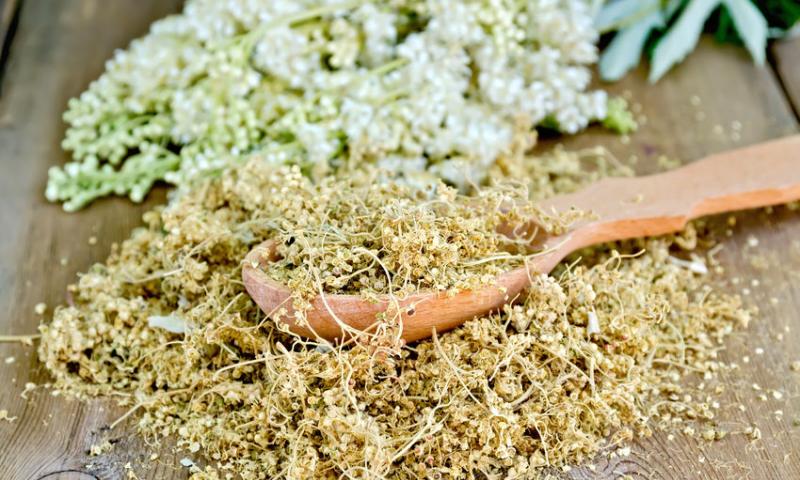 />
/>
ENGLISH NAME: Meadowsweet
LATIN NAME: Filipendula Ulmaria
OTHER COMMON NAMES: Bridewort, Spiraea Ulmaria, Dollof, Lady of the Meadow, Meadow Queen
ORIGIN: Europe
HABITAT: Western Asia and Europe. It can be found in wet meadows, swamps, banks of ponds, in forests and among bushes.
BOTANICAL INFORMATION: Meadowsweet (Latin. Filipéndula Ulmaria) is a representative of the genus Filipéndula, of the subfamily Rosoideae, of the Rosaceae family. The generic name Filipendula is formed from "filum" (thread) and "pendulus" (hanging), because the root tubers seem to hang on filiform roots. The genus combines up to 10 species widely distributed in forests and steppes of the Northern Hemisphere.
Meadowsweet is a perennial herb with an upright, leaf-bearing, unbranched, ribbed stem, 10-200 cm in height. It has a powerful and thick rhizome. The leaves are large (up to 30 cm) with stipules and short petioles. The plant differs from other types by intermittently pinnate leaves, in which there are smaller leaves between large leaves on the rachis, which have a strong smell when rubbed. The flowers are fragrant, numerous, small, yellowish-white, collected in a dense paniculate inflorescence. The plant blooms in June and July. Fruits are polygamous and ripen in July and August.
CHEMICAL COMPOSITION: The chemical composition of Meadowsweet flowers is fully studied. They contain flavonoids. Also phenolic glycosides are revealed - spirein, isosalicin and monotropitin; polyphenolic compounds - coffee and ellagic acids. Also salisylates ,carbohydrates, diterpenoids, triterpenoids, carotenoids, benzene and its derivatives, phenols and their derivatives, aromatic acids, furan derivatives, phenanthrene, aliphatic hydrocarbons, alcohols, aldehydes, ketones, fatty acids, vitamin C, tannins, chalcones, steroids.
Polysaccharide anticoagulant of nature - heparin is also found In the flowers of Meadowsweet.
HISTORICAL INFORMATION:
The German name of the plant Mädesüß comes from the fact that before Meadowsweet flowers were added to the honey wine for flavoring. The second interpretation of its name in European languages is associated with the old name of the wet meadows - Mede and the English name sounds accordingly meadow sweet, that is, “sweet from the meadows”. As an aromatic fragrance, dry Meadowsweet flowers were as snuff. In ancient legends, Meadowsweet was first discovered on the island of Cyprus, at the site of the birth of the beautiful Aphrodite Cypride. This goddess was born out of the sea foam and appeared before the inhabitants of the island, dressed only in foamy laces. Where the foam fell ashore, there grew high herbs with fragrant inflorescences.
The sweet-bitter flavor of Meadowsweet has long been considered enjoyable and used to create a pleasant aroma in the room. Fresh inflorescences were put on the floor and left for the whole night. In the morning, the plants were swept and thrown away, leaving a pleasant aroma in the room.
In England, Meadowsweet was mixed with other herbs to flavor things and bed linen, something like a modern sachet. It was the favorite fragrance of the English Queen Elizabeth I. The German name of the plant Mädesüß comes from the fact that before Meadowsweet flowers were added to the honey wine for flavoring. The second interpretation of its name in European languages is associated with the old name of the wet meadows - Mede and the English name sounds accordingly meadow sweet, that is, “sweet from the meadows”. As an aromatic fragrance, dry Meadowsweet flowers were as snuff.
*This article is for informational purposes only. We suggest consulting a physician before using these or any other herbal supplements.
